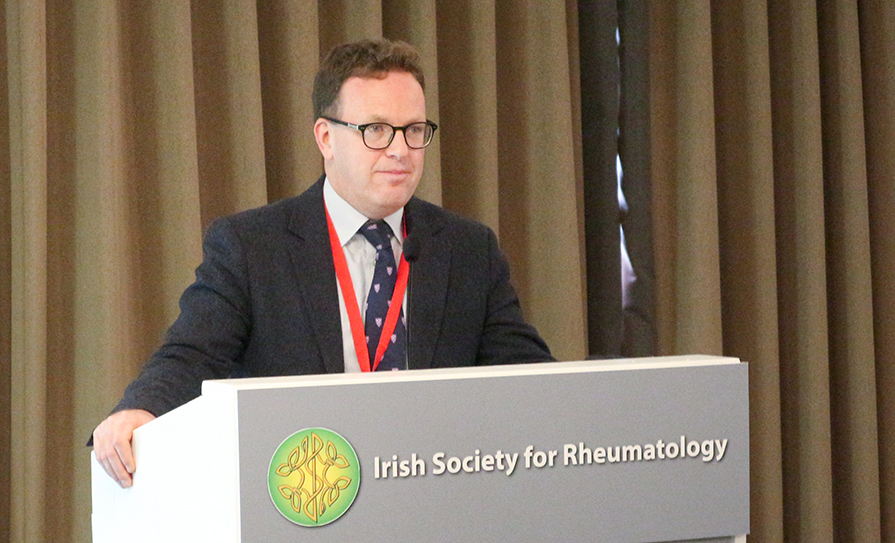
Professor John Pauling
The Irish Society for Rheumatology Spring Meeting 2023 was addressed by Prof John Pauling, Consultant Rheumatologist at the University of Bristol, UK, who delivered a talk titled ‘Challenges in vascular ischaemia of scleroderma’. Prof Pauling discussed Raynaud’s phenomenon. He told the conference: “Because of Maurice Raynaud’s thesis, we have ended up using the term ‘Raynaud’s phenomenon’ to describe this huge breadth of digital vasculopathy that extends from a benign but intrusive vasospastic disturbance, primary Raynaud’s phenomenon, to conditions in which you can get digital necrosis and gangrene, and I think that’s a problem.”
He provided a definition of Raynaud’s phenomenon and said that the condition is so heterogenous that nailing-down a definition is “nigh on impossible. Raynaud’s is a symptom rather than a clinical state”. However, he said he did agree with the fact that Raynaud’s does require some degree of cold sensitivity in which there are often colour changes in the fingers. “We certainly don’t think you need to have three colour changes; I don’t think you even need to have two,” he said. “In fact, we have done work in our scleroderma population and found that more than 10 per cent of our scleroderma patients will only describe one colour change, whereas they all had Raynaud’s phenomenon. So if you have a patient in front of you and you suspect systemic sclerosis [and the patient] doesn’t have Raynaud’s phenomenon, then think about scleroderma.”
Prof Pauling presented a case study and told the attendees: “Primary Raynaud’s is far more complex than we give it credit for,” he said. “We have devised the new ASRAP [Assessment of the Systemic Sclerosis-Associated Raynaud’s Phenomenon] questionnaire, which we should be considering as end-point models for future clinical trials. I would encourage everybody to really think about cause and factors contributing to the geovascular pathology when treating your patients with Raynaud’s, irrespective of diagnosis.”





Leave a Reply
You must be logged in to post a comment.